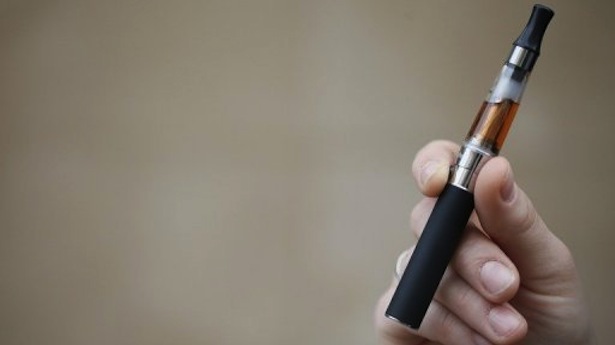
Due to concerns that e-cigarette use among youths could lead to nicotine addiction and encourage use of conventional tobacco products, the American Heart Association have issued new recommendations stating that e-cigarettes should be subject to a federal ban for minors.
The statement, recently published in the journal Circulation, also calls for strict regulations on marketing of e-cigarettes and a ban on flavored vapors amid concerns that they make the devices appealing to youngsters.
E-cigarettes (electronic cigarettes) are battery-operated devices whereby the user inhales flavored, vaporized nicotine solutions, although there are some solutions available that do not contain nicotine.
There has been much controversy surrounding the use of e-cigarettes recently. Earlier this year, researchers from University College London in the UK published a study claiming that e-cigarettes help smokers to quit. However, other research has challenged this theory. For instance, a study published in JAMA Internal Medicine suggested there is no association between e-cigarette use and reduced cigarette consumption, therefore e-cigarettes should not be marketed as smoking cessation aids.
In fact, another study published in JAMA Pediatrics claimed that e-cigarettes may encourage conventional cigarette use in adolescents. It found that e-cigarette use among middle and high school students doubled between 2011 and 2012, and that 76.3 percent of these youths also smoked conventional cigarettes.
This study and others reporting similar findings have been the basis for the new recommendations issued by the American Heart Association (AHA).
AHA ‘fiercely committed’ to preventing tobacco addiction in another generation
Nancy Brown, CEO of the AHA, notes that over the last 50 years, 20 million Americans have died of tobacco-related causes. As a result, she stresses that the AHA is “fiercely committed” to preventing the tobacco industry from addicting another generation to their products, adding:
“Recent studies raise concerns that e-cigarettes may be a gateway to traditional tobacco products for the nation’s youth, and could renormalize smoking in our society. These disturbing developments have helped convince the association that e-cigarettes need to be strongly regulated, thoroughly researched and closely monitored.”
In April this year, the Food and Drug Administration (FDA) announced a proposal to extend current tobacco regulation to include e-cigarettes.
If the rule is made final, it may mean that minors under the age of 18 will not be able to purchase e-cigarettes. The devices may also need to include health warnings, and although manufacturers will not be banned from marketing them, the products may need to be subject to FDA review prior to advertisement.
The public comment period for this proposal ceased last month, and the FDA is now in the process of making any changes.
But in June, the AHA and other organizations said the FDA needs to move faster and do more. They said the organization should issue a “complete, effective final rule with no exceptions and address critically important issues not addressed in the proposed rule, such as marketing and flavorings that appeal to kids.”
The AHA echoed these sentiments this in their latest recommendations, noting that e-cigarette advertisements using celebrities and marketing of “alluring” flavors make the products more appealing to children and adolescents. They point to a recent study revealing that youth exposure to e-cigarette advertisements soared by 250 percent between 2011 and 2013, meaning 24 million youngsters are now exposed to such marketing.
“In the years since the FDA first announced it would assert its authority over e-cigarettes the market for these products has grown dramatically,” says Brown. “We fear that any additional delay of these new regulations will have real, continuing public health consequences. Hence, we urge the agency to release the tobacco deeming rule by the end of this year.”
Recommendations for clinicians and future research
The AHA policy statement also urges clinicians not to recommend e-cigarettes as a primary smoking cessation aid for patients, claiming there is not enough evidence to suggest the devices help people quit smoking. But they point out that if conventional treatment – such as gum and patches – fails to help smokers quit the habit, clinicians should not discourage the patient from using e-cigarettes if they believe it will help them.
However, the AHA stresses that clinicians should be educated on e-cigarettes so they are able to inform patients that the devices are unregulated, may contain low levels of toxic chemicals and are not FDA-approved as smoking cessation aids.
In addition, they recommend that patients using e-cigarettes to stop smoking should be set a quit date by their clinician, given that there is lack of long-term research on the safety of the devices.
As such, the AHA also call for ongoing and extensive research into e-cigarette use, specifically the characteristics of the products, the effects of marketing and how the products affect people’s health and the environment long-term.
Dr. Elliott Antman, president of the AHA, warns that the rising use of e-cigarettes threatens to undo some of the progress made in the fight against tobacco use and related diseases. “Nicotine is a dangerous and highly addictive chemical no matter what form it takes – conventional cigarettes or some other tobacco product,” says Dr. Antman. “Every life that has been lost to tobacco addiction could have been prevented. We must protect future generations from any potential smokescreens in the tobacco product landscape that will cause us to lose precious ground in the fight to make our nation 100% tobacco-free.”
Meanwhile, just yesterday the World Health Organization (WHO) released a statement calling for tougher restrictions on electronic cigarettes, including curbs on advertising, indoor use and such flavors as fruit and candy. The agency also voiced “grave concern” at the expanding role of major tobacco companies in the small but fast-growing market for the battery-powered devices that heat nicotine-laced liquid into vapor, warning they could increase tobacco use.
